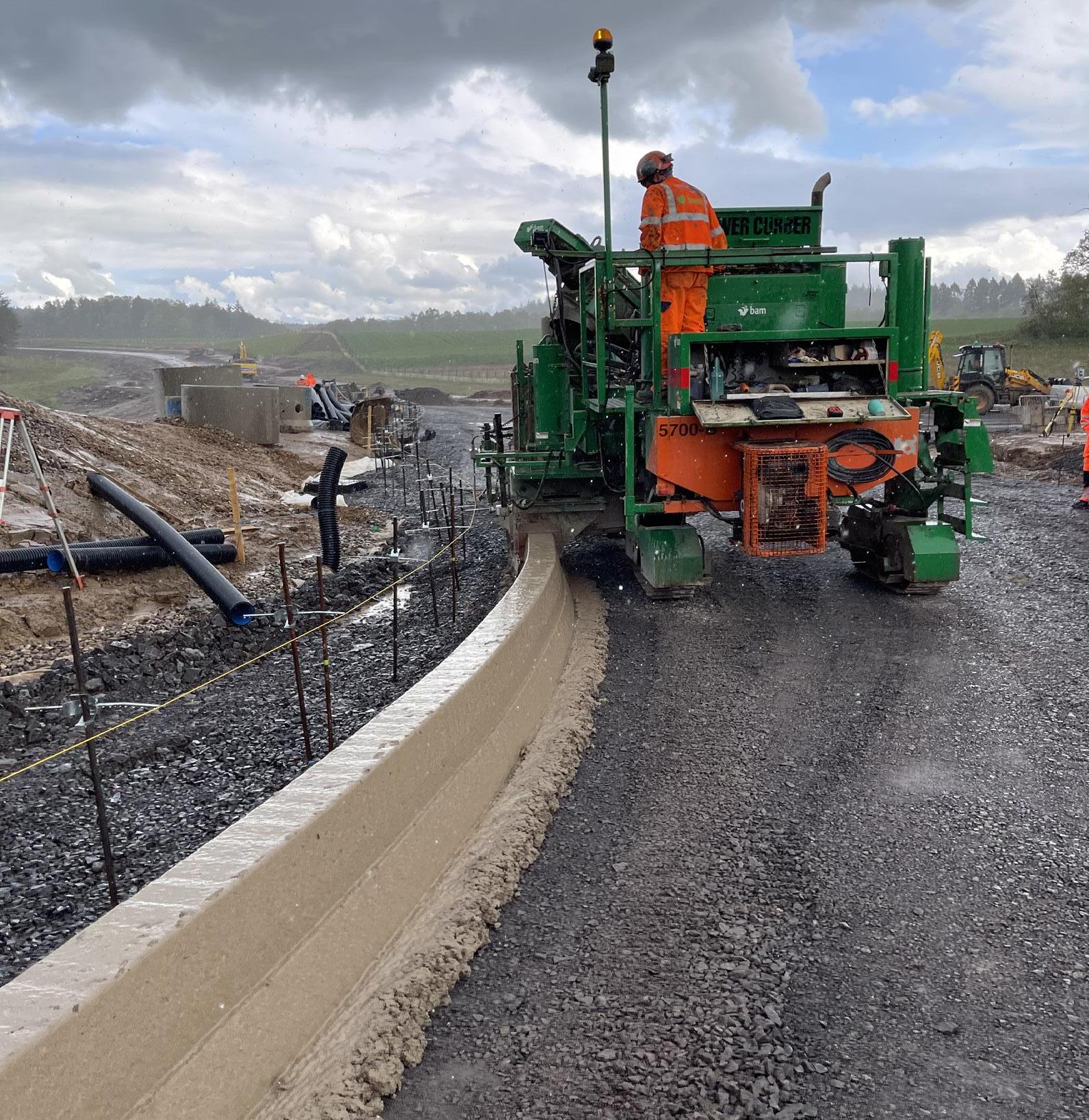
3 minute read
Extruded Kerbing: Paving the way for the Cross Tay Link Road
Ensuring the long-term sustainability of all works conducted across the Cross Tay Link Road project is a key objective for both BAM Nuttall and Perth & Kinross Council.
While it is accepted that construction is a carbon-intensive process, a joint commitment to reducing carbon as much as possible has resulted in an eco-focused approach to all elements of the design and build. One of the key considerations in the process, therefore, is the ongoing maintenance and lifespan of individual components. By building right first-time round, the need for future replacement and ongoing maintenance is reduced – or in some cases, eliminated altogether.
One such element of the Cross Tay Link Road project is the kerbing, 7.15kms of which is required across the entire project. This is a rigorous process that traditionally demands much in the way of materials, energy, and human resources.
Although viewed by many as a commonplace design element of urban development, kerbing is in fact integral to the fabric of road construction. At its basic purpose it serves as a barrier between roads and paths or green space, but it is also used for enhancing drainage, and improving durability against weather and other environmental factors.
Brian Hosey (Foreman), a BAM employee since 2006, is leading the charge on the kerbing for the Cross Tay Link Road. He commented:
“Once earthworks are complete, kerbing is one of the next construction elements of any road construction job. Traditional precast kerbing methods are not only labour intensive and time consuming, but are prone to popping
Traditional Kerbing
Precast kerbs are laid piece-by-piece in a labour and energy intensive process.
Extruded Kerbing out, making maintenance an ongoing issue. This makes them more expensive to lay and to maintain, and also comes with great environmental impacts across the lifespan of the project.”
Kerbs are cast onsite in a continuous extruding process, laying up to 400m of kerb per day.
Over time, failures can occur which require ongoing maintanence.
Pop-out failures are not possible, greatly reducing long-term maintenance.
Throughout all areas of the Cross Tay Link Road, BAM Nuttall have opted to use extruded kerbing. This modern approach to kerbing provides a stronger finish, is extremely durable and comes with no or low maintenance.
Robert Bruce, Perth and Kinross Council, commented, “BAM in Ireland have been using extruded kerbing for several years now, but we do not see it so much in Scotland. It was important to the Council when appointing a contractor that we find the most cost-effective, environmentally sound solutions throughout, so it is positive for the project that this type of kerbing is being used.
“BAM can lay up to 400 metres of extruded kerbing in a day with only three people. It is difficult even to compare that to traditional methods because there are so many stages involved – and the end result is not as strong.”
BAM use a Power Kerber Super B machine for extruded kerbing, which is staffed by only three operatives throughout the entire process.
Brian continued, “As with all kerbing jobs, the engineers go ahead of us and set the levels that we work to. From here, our machine follows the pins and stringline set-up, to ensure everything is in the exact position.
“The first operative is the driver; they will feed the concrete to the grade level set out by the pins. Next up is the bottle-operator; they control the concrete truck coming in and the consistency of the concrete mix. This is crucial to the integrity of work because if it is too wet the kerb will collapse, and if too dry it will crack. Once this is done, the concrete finisher will address the aesthetics and give it the finish essential to the job.
“All of our concrete onsite is being supplied by Breedon. They are well known for quality materials that last well and give a great finish.”
Brian and the team have progressed well in phase two and have now laid 2.75kms of the extruded kerbing including half of the A93, and splitter islands and roundabouts at the A94, Highfield and Stormontfield.

They have also commenced kerbing at the footways at Highfield and the bus stop kerbs at each junction which will facilitate the long-term active travel component of the project.
“It has been a challenge at times, working around the traffic on busy roads such as the A93, but it was important to everyone that we make this happen with minimum disruption to drivers. We are on target to complete kerbing during the summer months.”










